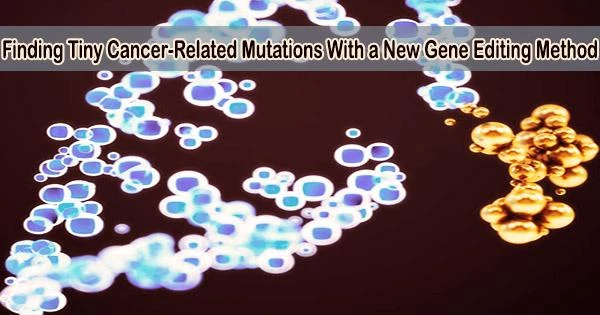How aggressive a tumor is or how well a cancer patient reacts to a particular medication can be greatly impacted by a change in only one letter in the coding that makes up a cancer-causing gene.
Instead of being constrained to more broadly focused strategies, such as deleting the entire gene, scientists will be able to analyze the impact of these exact genetic modifications in preclinical models thanks to a new, extremely precise gene-editing tool developed by Weill Cornell Medicine investigators.
The tool was described in a study published August 10, 2023, in Nature Biotechnology. Weill Cornell Medicine’s Dr. Lukas Dow and his team genetically modified mice to contain an enzyme that enables them to alter a single base or “letter” in the mouse’s genetic code. Dr. Dow is an associate professor of biochemistry in medicine.
By giving the mice an antibiotic called doxycycline, the enzyme may be turned on or off, lowering the possibility of unwanted genetic modifications developing over time. Additional molecular and biochemical examinations of the effects of these exact genetic modifications are made possible by the tool’s ability to generate tiny replicas of mouse organs including organoids of the gut, lung, and pancreas.
We are making the technology available to other people in the field so they can use it to study their mutations of interest. If we can learn the genetic underpinnings of what causes tumor formation and why patients have different outcomes, that may help us develop new drugs or select the best drugs for a particular patient.
Dr. Lukas Dow
“We are excited about using this technology to try and understand the genetic changes that influence a patient’s response to cancer therapies,” said Dr. Dow, who is also a member of the Sandra and Edward Meyer Cancer Center at Weill Cornell Medicine.
Dr. Dow noted that differences in a single base in a gene can have functional consequences. But most gene-editing tools currently available aim at larger targets like whole genes. Scientists can also use viruses to deliver genes with specific mutations, but this technique is limited to targeting specific tissues like the brain and liver, he said.
“We’ve had good tools for a long time now to knock genes out or overexpress genes,” Dr. Dow said. “But we have not had good ways to create the single-base mutations that we see in patient’s tumors.”
Using a mouse model, they can examine how the alterations affect tumors and figure out which treatments are most effective for people who have a certain mutation. Organoids made from mice allow for in-depth research in tissues that are difficult for researchers to access using virus-based methods.
“One mouse model allows you to do two things: test the effects of a mutation in cancer initiation, progression, or treatment response in mice; and take a closer look at the associated molecular or biochemical changes using organoids,” Dr. Dow said.
Dr. Dow and his team, including co-first authors Dr. Alyna Katti, a former graduate student, and Dr. Adrián Vega-Pérez, a postdoctoral associate, are currently using this new technology to identify the effects of single-base mutations in lung, colon, and pancreatic cancer. Other researchers will be able to utilize their genetically modified mice, which could hasten the development of a tailored cancer treatment.
“We are making the technology available to other people in the field so they can use it to study their mutations of interest,” Dr. Dow said. “If we can learn the genetic underpinnings of what causes tumor formation and why patients have different outcomes, that may help us develop new drugs or select the best drugs for a particular patient.”





